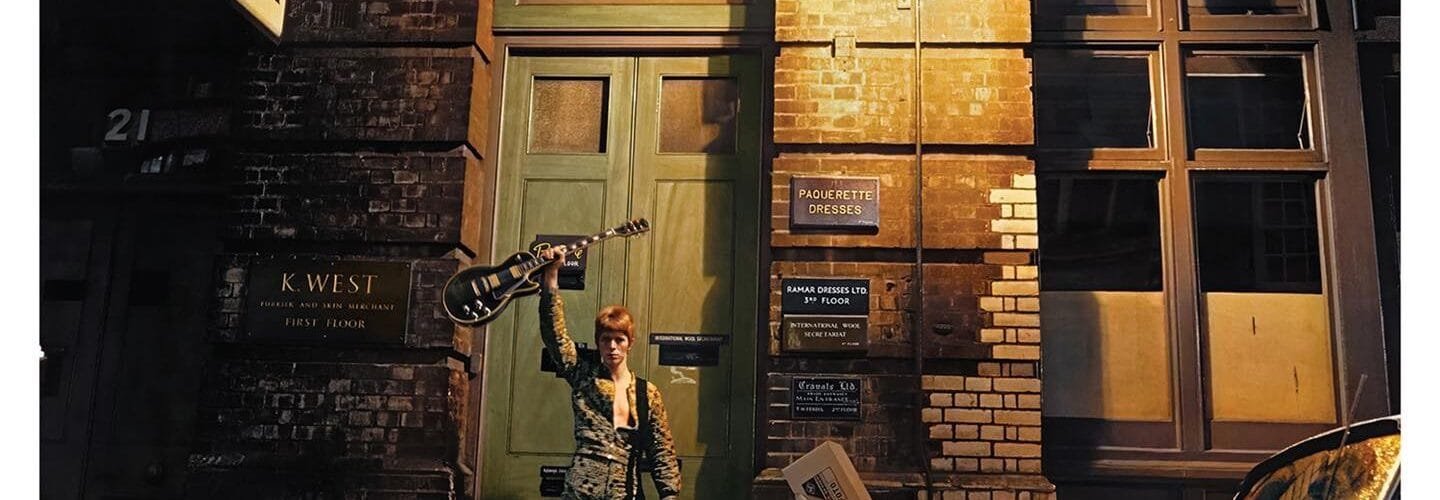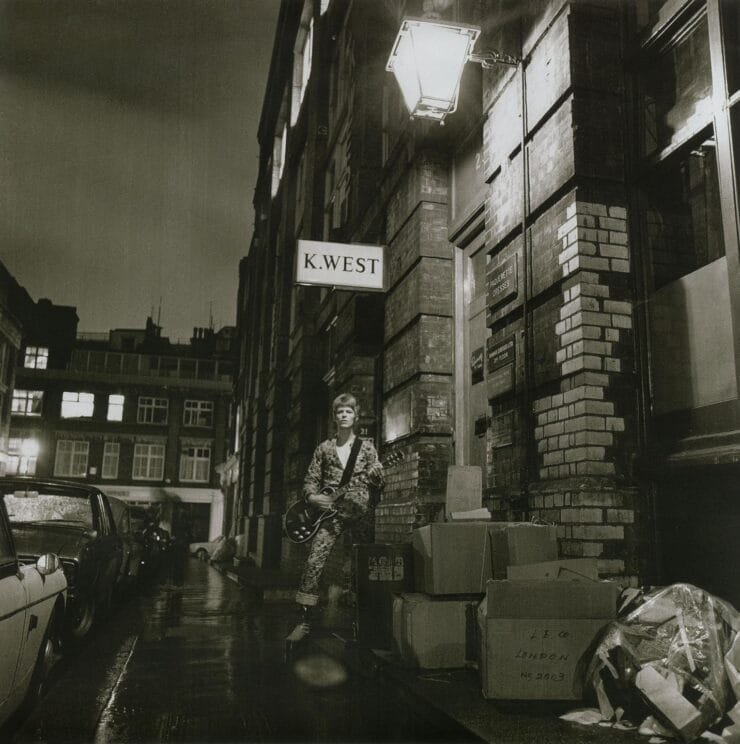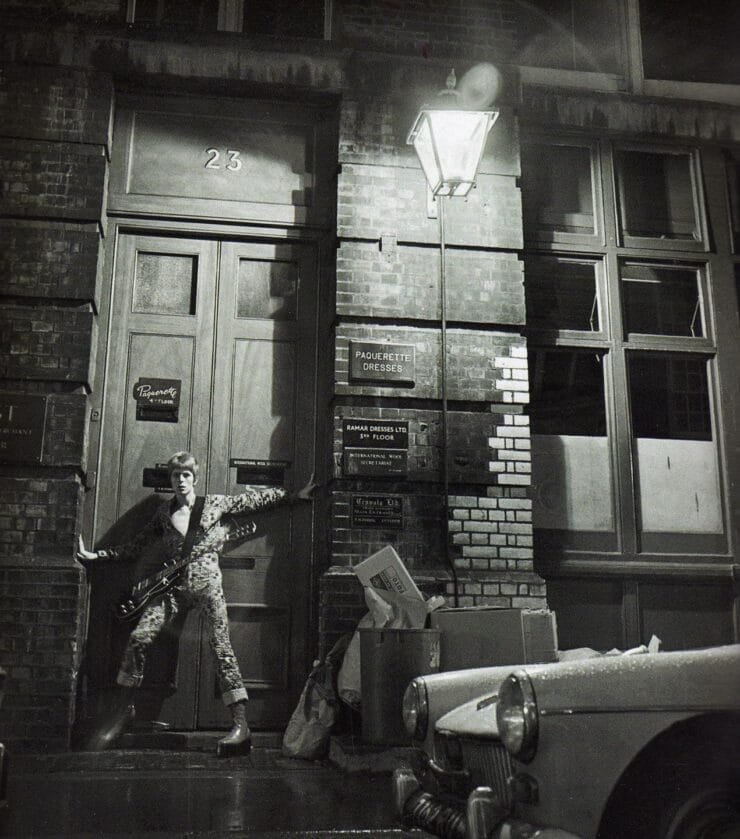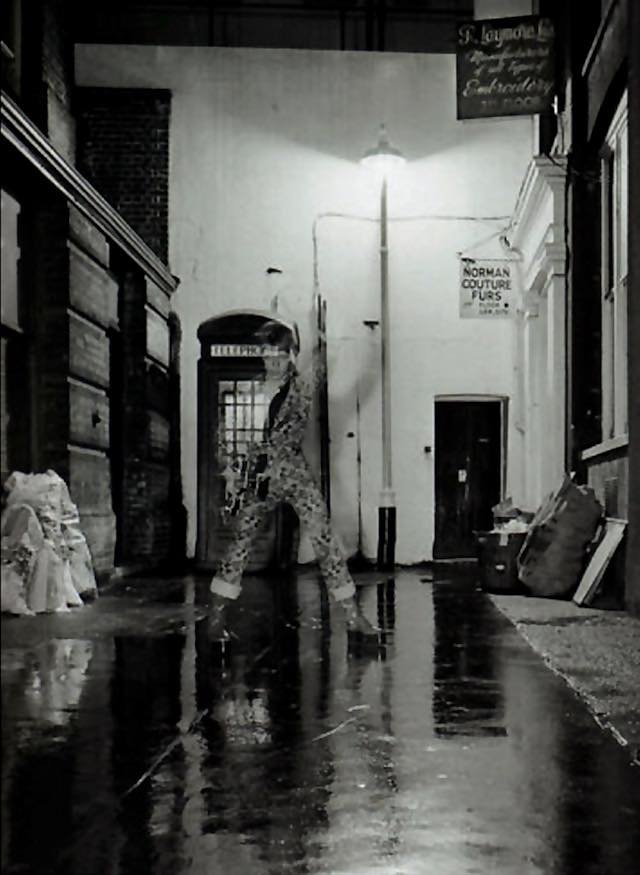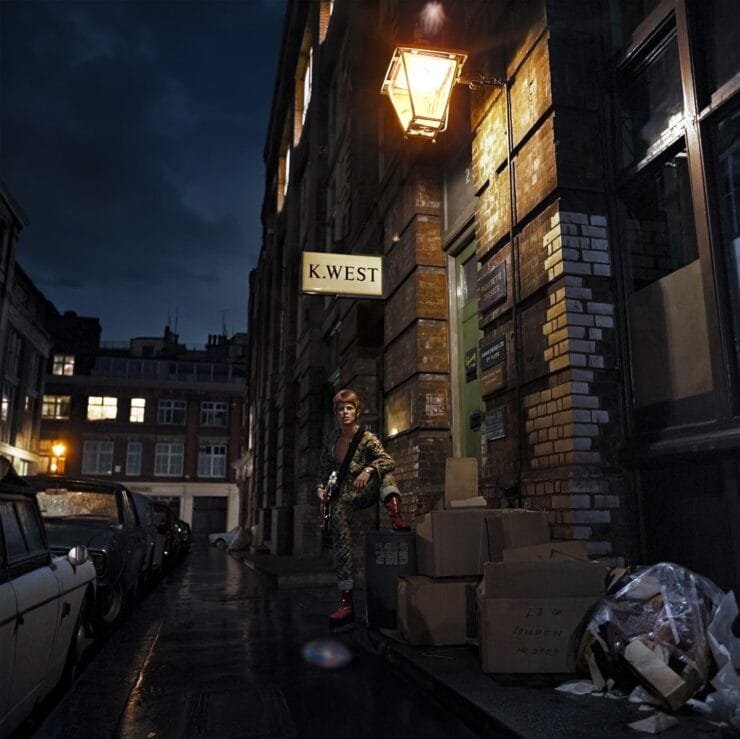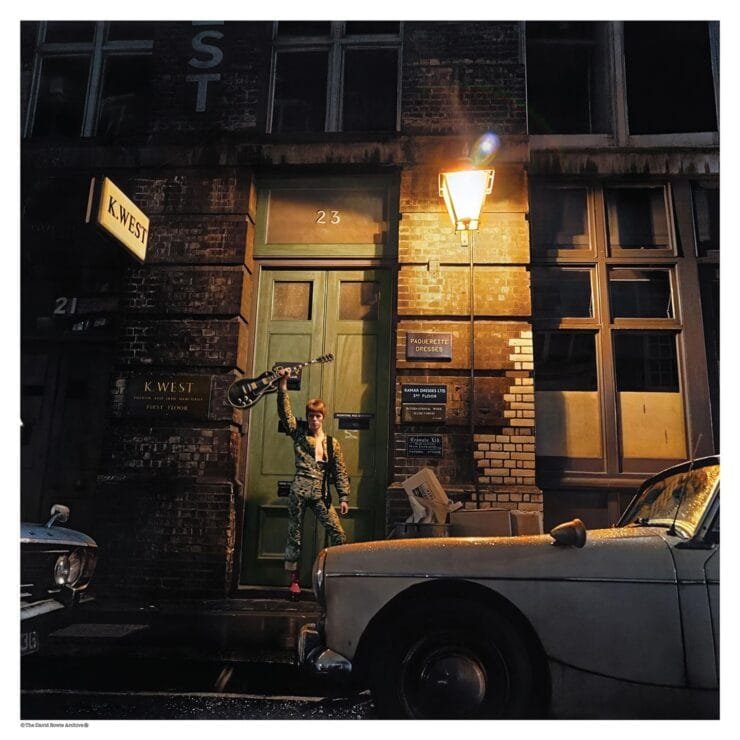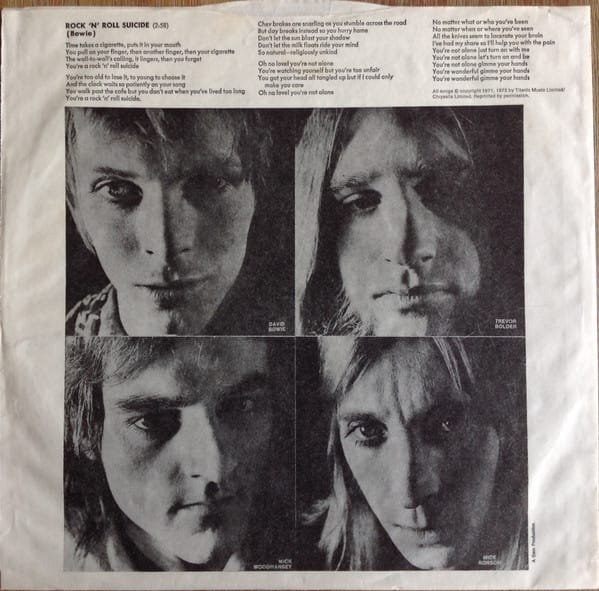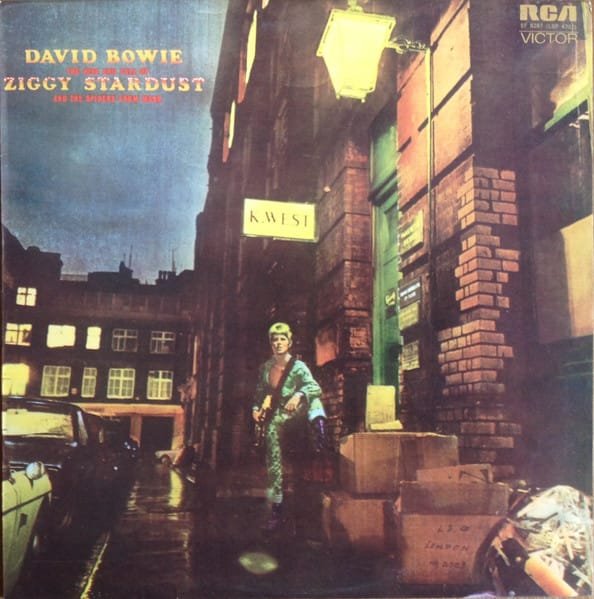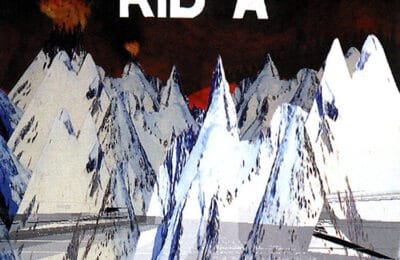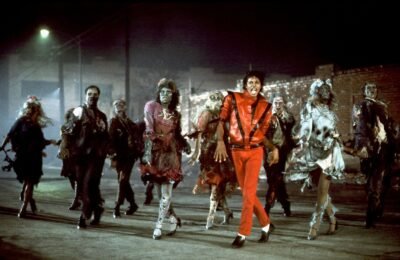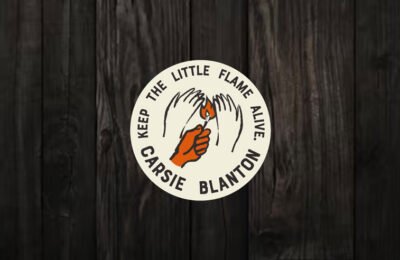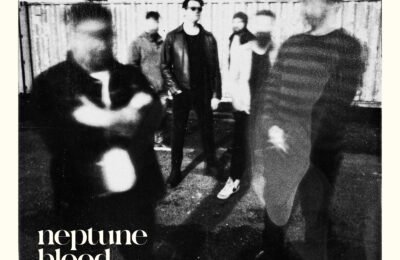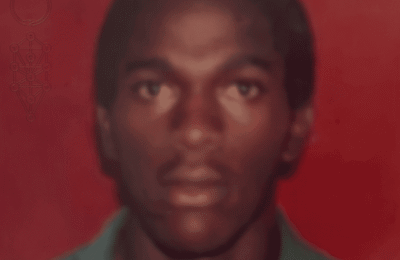They touched down in the drizzle of a London January, somewhere near Regent Street. A lone figure was first spotted in a narrow alley off Heddon Street—red hair blazing, guitar slung low, eyes full of alien promise. Ziggy Stardust had arrived, and the Spiders from Mars weren’t far behind. Earth would never sound the same again… All right, all right… No I am not high or off my rocker. I am pretty sure you see where I am going with this. Today, we’re diving into one of the most iconic album covers in rock ’n’ roll history: The Rise and Fall of Ziggy Stardust and the Spiders from Mars.
Wild Boys and Clockwork Orange
In 1972, David Bowie wasn’t very successful yet. He had already released four albums, and his last one, Hunky Dory didn’t sell so well. He was coming back with a new album focused on his stage alter-ego Ziggy Stardust and his backing band, The Spiders From Mars. It was kind of a make it or leave it situation.
Bowie was fascinated by the aesthetics from A Clockwork Orange released the year before. He had decided to go in that direction for the photoshoot. In this context, David Bowie set for Brian Ward’s photo studio with his band, at 23 Heddon Street. He had requested the photographer for an outside location resembling a Brooklyn alley scene.
One Cold Night on Heddon Street

« Upstairs in the studio we did the Clockwork Orange look-a-likes that became the inner sleeve. » remembers Bowie. « The idea was to hit a look somewhere between the Malcolm McDowell thing with the one mascara’d eyelash and insects. It was the era of Wild Boys by William S. Burroughs, and it was a cross between that and Clockwork Orange that really started to put together the shape and the look of what Ziggy and the Spiders were going to become. »
After a while inside the studio, the photographer suggested to take the little crowd to catch the last light of this late winter day. But it was cold outside, and it just started to rain, and… well the band was not too eager to go outside to freeze and get their hair wet. So David grabbed the red Les Paul guitar he borrowed from his friend Mark Pritchett, and headed out with Brian Ward.
They didn’t venture far—Bowie had the flu and didn’t want to stray too far from the warm studio. They wandered up and down the street, snapping photos in doorways, phone booths, and against damp brick walls. The light was fading fast, and rain glazed the pavement, reflecting the streetlamps. Some of these shots would become icons
Painting Stardust: Turning Black and White into Magic
RCA Records sent the black and white pictures to designer Terry Pastor form him to colourize them. He had worked with Bowie previously, on another photo by Brian Ward, for the Hunky Dory album cover. Pastor chose bright colours for Ziggy Stardust’s jumpsuit and hair, making him pop against the dark alley, reinforcing the concept of this alien starman descending to earth. The only other thing that stands out is a mysterious shop sign reading « K.WEST ».
As Pastor moved on to the back cover, he remembered a rather amusing phone call from David Bowie:
« He asked ‘How’s the cover going?’ I said it was all right. I’ve finished the front and I’m doing the back.
‘Oh, there’s a back?’
Yeah, with the phonebox.
‘Oh, I didn’t know there was going to be a back cover as well. Can’t wait to see it!’».
The furrier’s cold reception
A few months later, The Rise And Fall Of Ziggy Stardust And The Spiders From Mars was meeting an unexpected success. The album reached 6th place in the UK charts. Bowie, had become a mega-star who could barely go out without being mobbed. Everyone seemed to be happy and satisfied… until one day when RCA Records received a letter from Henry Konn’s lawyers.
“Our clients are furriers of high repute who deal with a clientele generally far removed from the pop music world. Our clients certainly have no wish to be associated with Mr. Bowie or this record as it might be assumed that there was some connection between our client’s firm and Mr. Bowie, which is certainly not the case.”
That K.WEST sign? It stood for Konn West End—Henry Konn’s shop in the West End of London. And he was not happy with that kind of publicity. But not for long.
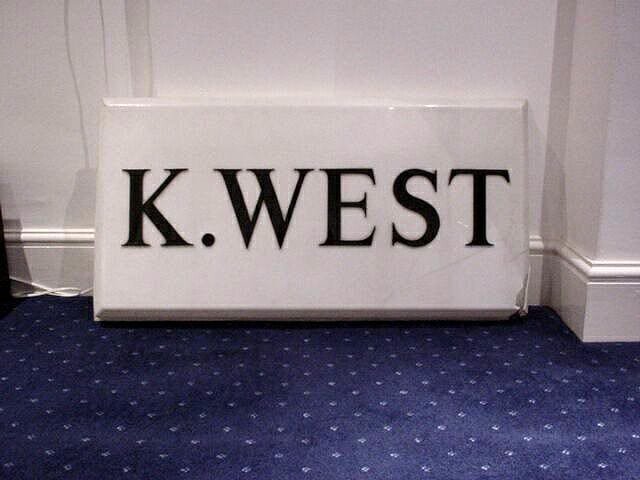
Fans on a Kwest
Fans began seeing hidden meaning in the sign. From K.WEST to “quest” was just a hop, skip, and a letter swap. Just like the Physical Graffiti building, or the Abbey Road crossing, 23 Heddon Street and its neighbour shop soon became a pilgrimage site. Fans came in droves, taking pictures in front of the shop or striking poses in the famous Phone Booth. It was good for business!

The Heddon Street furrier shop closed in 1991. The famous sign was auctioned off as memorabilia. However, it wasn’t the original sign. It was removed by a drunken fan in 1982. Today, the building belongs to the Crown Estate and believe it or not, they installed a plaque commemorating the moment Ziggy Stardust landed on Earth.
The Strangest Oddity
While digging around online for odd tidbits to brighten up this article, I stumbled on something so absurd I had to laugh: a conspiracy theory that Bowie predicted Kanye West’s rise. Yep, Kanye. Born in June 1977—five years after Ziggy was released. Five Years—just like the album’s opening track. Which apparently makes Kanye the Starman? I won’t go too far into that rabbit hole, but if you’re curious, check out this video. Wild stuff.
Played at Maximum Volume
The success of Ziggy Stardust came down to more than just a striking cover—but there’s no denying its lasting impact. That image, bathed in moody light and mystery, captured the essence of Bowie’s Ziggy: glamorous, ambiguous, otherworldly.
It was more than a photograph. It was a statement. A character introduction. A signal from another world.
On the back cover, there’s a simple instruction: “To be played at maximum volume”. I wouldn’t have it any other way.
